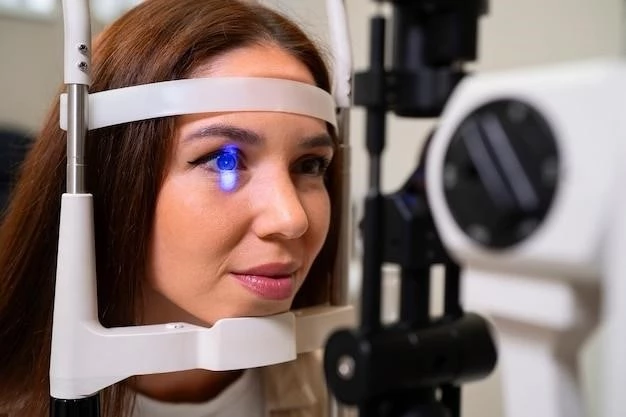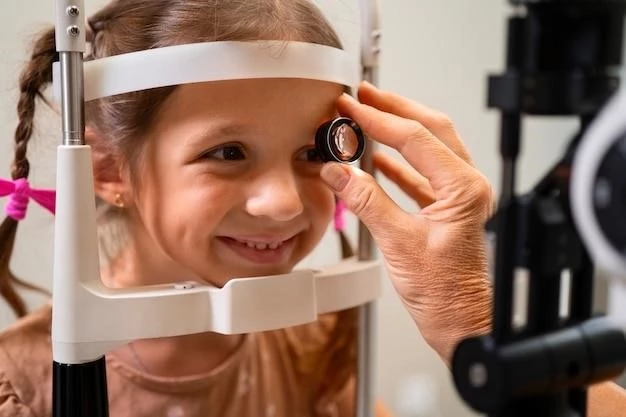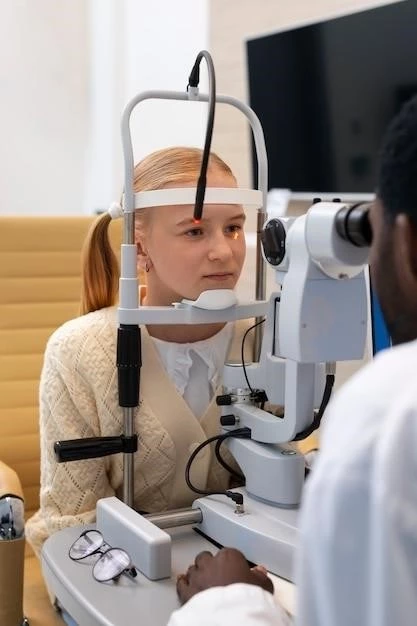Introduction
Radioulnar synostosis is an abnormal connection between the radius and ulna‚ which may lead to limitations in forearm rotation. Retinal pigment abnormalities can also be associated with this condition.
Definition of Radioulnar Synostosis and Retinal Pigment Abnormalities
Radioulnar synostosis is an abnormal connection between the radius and ulna‚ affecting forearm rotation. It can be congenital‚ iatrogenic‚ or posttraumatic‚ leading to limited range of motion. This condition may be associated with retinal pigment abnormalities‚ impacting vision and systemic health.
The connection between the radius and ulna‚ whether osseous or fibrous‚ disrupts normal forearm dynamics‚ impairing pronation and supination. In some cases‚ radioulnar synostosis manifests with additional clinical features like short stature‚ facial abnormalities‚ and mental retardation‚ highlighting the complexity of this condition.
Congenital Radioulnar Synostosis
Congenital radioulnar synostosis is a rare anomaly limiting forearm rotation. It can be associated with other clinical features like short stature and facial abnormalities.
Description and Characteristics
Radioulnar synostosis presents as an abnormal fusion between the radius and ulna‚ impacting forearm rotation. This condition‚ whether congenital‚ iatrogenic‚ or posttraumatic‚ hinders the normal range of motion and can lead to functional limitations. Associated with retinal pigment abnormalities‚ radioulnar synostosis can exhibit a spectrum of clinical features‚ including short stature‚ mental retardation‚ and distinctive facial characteristics. Understanding the intricate nature of this anomaly is key to effective management and treatment strategies.
Diagnostic Methods
Diagnosing radioulnar synostosis typically involves a thorough physical examination to assess forearm rotation limitations. Imaging studies such as X-rays‚ CT scans‚ or MRI may be utilized to visualize the abnormal connection between the radius and ulna. Ophthalmologic evaluations are crucial to identify retinal pigment abnormalities. Genetic testing may also play a role in certain cases to uncover underlying genetic factors associated with the condition.

Types of Radioulnar Synostosis
There are two types described for isolated radioulnar synostosis. Type I involves a smooth fusion between the radius and ulna without radial head dislocation. In contrast‚ Type II is characterized by a fusion accompanied by radial head dislocation‚ leading to limitations in forearm rotation.
Type I⁚ Smooth Fusion
Type I radioulnar synostosis is characterized by a smooth fusion between the radius and ulna‚ typically without radial head dislocation. This fusion‚ extending approximately 2 to 6 cm‚ results in restricted forearm rotation and challenges in performing pronation and supination movements effectively.
Type II⁚ Fusion with Radial Head Dislocation
In Type II radioulnar synostosis‚ there is a fusion with radial head dislocation‚ typically occurring just distal to the radial epiphysis. This fusion‚ coupled with radial head dislocation‚ further complicates forearm rotation and poses additional challenges for functional movements involving the forearm.
Clinical Presentation
The clinical presentation of radioulnar synostosis varies‚ with limited forearm rotation being a hallmark feature. Possible associated syndromes may include distinctive facial characteristics and mental retardation.
Symptoms in Children
In children‚ symptoms of radioulnar synostosis typically include limitations in forearm rotation‚ which can affect daily activities requiring pronation and supination movements. Additionally‚ children may exhibit associated syndromes with features such as unique facial characteristics and mental retardation.
Associated Syndromes
Children with radioulnar synostosis may present with associated syndromes characterized by a combination of symptoms such as unique facial features‚ short stature‚ mental retardation‚ and retinal pigment abnormalities. This complex array of clinical manifestations requires comprehensive evaluation and management to address the multifaceted needs of affected individuals.
The incidence of radioulnar synostosis and retinal pigment abnormalities varies‚ with causes ranging from congenital anomalies to genetic factors. Possible etiologies can include disruptions in normal bone development and genetic mutations affecting limb and ocular structures.
Epidemiology and Causes
The incidence of radioulnar synostosis and retinal pigment abnormalities varies‚ with causes ranging from congenital anomalies to genetic factors. Possible etiologies can include disruptions in normal bone development and genetic mutations affecting limb and ocular structures.
Incidence of Radioulnar Synostosis and Retinal Pigment Abnormalities
The incidence of radioulnar synostosis and retinal pigment abnormalities can vary among individuals‚ with congenital anomalies and genetic factors playing key roles in the development of these conditions. Disruptions in bone development and genetic mutations may contribute to the manifestation of radioulnar synostosis and associated retinal pigment abnormalities.
Treatment Approaches
Management strategies for radioulnar synostosis and retinal pigment abnormalities vary and may encompass both non-surgical and surgical interventions. The choice of treatment depends on the severity of the condition and the individual’s specific needs.
Non-surgical management approaches for radioulnar synostosis and retinal pigment abnormalities focus on conservative measures such as physical therapy‚ occupational therapy‚ and orthotic devices to improve forearm function and manage associated symptoms. These non-invasive interventions aim to enhance range of motion‚ optimize functional abilities‚ and provide supportive care for individuals affected by these conditions.
Non-Surgical Management
Non-surgical management approaches for radioulnar synostosis and retinal pigment abnormalities focus on conservative measures such as physical therapy‚ occupational therapy‚ and orthotic devices to improve forearm function and manage associated symptoms. These non-invasive interventions aim to enhance range of motion‚ optimize functional abilities‚ and provide supportive care for individuals affected by these conditions.
Prognosis and Complications
The prognosis of radioulnar synostosis and retinal pigment abnormalities varies‚ with potential long-term effects and risks of functional impairments. Understanding the complications associated with these conditions is crucial for optimal management and quality of life.
Potential Long-Term Effects
Long-term effects of radioulnar synostosis and retinal pigment abnormalities may include functional limitations‚ impaired daily activities‚ and potential risks of complications affecting quality of life. Understanding these effects is crucial for monitoring and managing the condition effectively.
Risk of Functional Impairments
Functional impairments associated with radioulnar synostosis and retinal pigment abnormalities may include limitations in forearm rotation‚ challenges in performing daily activities‚ and risks of complications affecting overall function and quality of life. Effective management strategies are essential to address these potential functional deficits and enhance the well-being of individuals with these conditions.
Current Research and Studies
Advancements in understanding the complexities of radioulnar synostosis and retinal pigment abnormalities are ongoing. Research aims to enhance diagnostic methods‚ improve treatment strategies‚ and provide better insights into the underlying genetic implications of these conditions.
Current research on radioulnar synostosis and retinal pigment abnormalities aims to deepen our comprehension of the underlying mechanisms‚ disease progression‚ and associated genetic implications. Ongoing studies seek to refine diagnostic tools‚ optimize therapeutic approaches‚ and enhance patient outcomes through a multidisciplinary approach.
Advancements in Understanding the Condition
Ongoing research and studies aim to advance the understanding of radioulnar synostosis and retinal pigment abnormalities‚ focusing on elucidating underlying mechanisms‚ disease progression‚ and genetic implications. By exploring these facets‚ researchers strive to enhance diagnostic accuracy‚ refine treatment modalities‚ and improve patient outcomes through a comprehensive approach.
Genetic implications of radioulnar synostosis and retinal pigment abnormalities play a significant role in the development and inheritance of these conditions‚ impacting the limb and ocular structures. Family planning considerations are essential in understanding the genetic factors associated with these anomalies.

Genetic Factors and Inheritance
Genetic implications of radioulnar synostosis and retinal pigment abnormalities play a key role in the development and inheritance of these conditions‚ impacting limb and ocular structures. Family planning considerations are essential in understanding the genetic factors associated with these anomalies.
Family Planning Considerations
It is essential to consider family planning implications due to the genetic nature of radioulnar synostosis and retinal pigment abnormalities. Understanding the inheritance patterns and associated risks is crucial for informed decision-making and genetic counseling in families affected by these conditions.
Impact on Quality of Life
The potential impact of radioulnar synostosis and retinal pigment abnormalities on the quality of life can be significant‚ affecting daily activities‚ functional abilities‚ and psychosocial well-being. Supportive care and resources play a crucial role in addressing the diverse needs of individuals and families facing these challenges.
Genetic Implications of Radioulnar Synostosis
The genetic implications of radioulnar synostosis and retinal pigment abnormalities contribute significantly to the development and inheritance of these conditions. Understanding the genetic underpinnings is crucial for familial implications and genetic counseling.
Supportive Care and Resources
The following data was found on the internet today on the subject⁚ Radioulnar synostosis is an abnormal connection between the radius and ulna‚ with potential impacts on forearm rotation and daily activities requiring pronation and supination movements. This condition may present as a congenital anomaly‚ affecting limb dynamics and‚ in some cases‚ leading to unique facial features and mental retardation. Furthermore‚ a significant association has been observed between radioulnar synostosis and retinal pigment abnormalities‚ emphasizing a comprehensive assessment and management approach.
